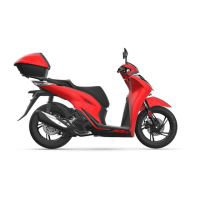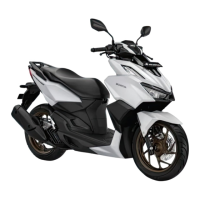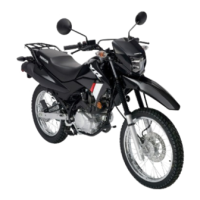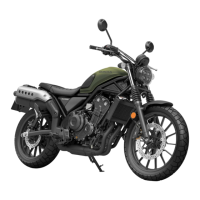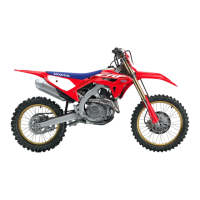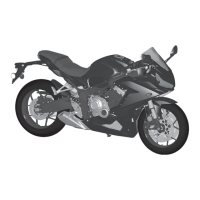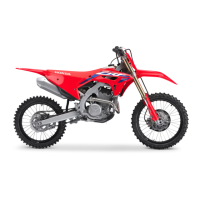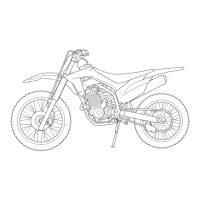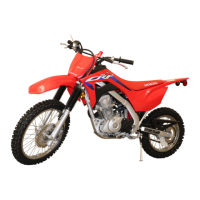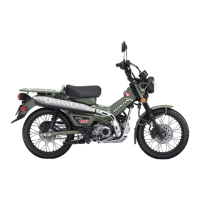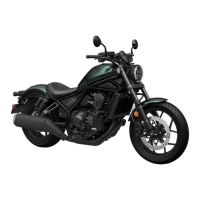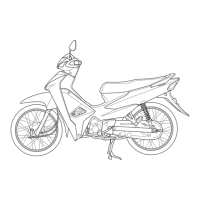
Do you have a question about the Honda WAVE110 2023 and is the answer not in the manual?
| Bore x Stroke | 50.0 mm x 55.6 mm |
|---|---|
| Compression Ratio | 9.0:1 |
| Transmission | 4-speed |
| Final Drive | Chain |
| Front Suspension | Telescopic Fork |
| Rear Brake | Drum |
| Front Tire | 70/90-17M/C 38P |
| Rear Tire | 80/90-17M/C 50P |
| Wheelbase | 1, 227 mm |
| Ground Clearance | 135 mm |
| Seat Height | 760 mm |
| Fuel Tank Capacity | 3.7 liters |
| Fuel System | PGM-FI |
| Ignition System | Full Transistorized |
| Starter | Electric and kick |
| Front Brake | Disc |
| Engine Type | Air-cooled, 4-stroke, OHC, single cylinder |
| Rear Suspension | Twin Shock Absorbers |
General safety advice for riders, including protective gear and hazard awareness.
Explains the meaning of warning and information labels on the vehicle for safety.
Covers rider safety, protective apparel, and general precautions for safe riding.
Safe riding practices, braking, parking, and handling different conditions.
Warnings against unauthorized accessories and vehicle modifications that affect safety.
Guidelines for safe loading, weight limits, and luggage placement.
Illustrates the fundamental steps for operating the motorcycle.
Explains dashboard gauges and warning lights.
Details operation of switches, ignition, steering lock, and shutter.
Covers engine starting, gear changes, and fuel tank filling.
Information on helmet holders and luggage compartments.
Covers why maintenance is crucial and the recommended service intervals.
General procedures for basic maintenance and pre-ride inspections.
Details on battery, fuses, engine oil, drive chain, tyres, and brakes.
Procedures for checking the side stand operation and throttle freeplay.
Covers engine starting issues and tyre punctures.
Addresses battery problems and burned-out light bulbs.
Details on checking and replacing blown fuses.
Details on ignition keys, instruments, and dashboard controls.
Guidelines for cleaning, polishing, and storing the vehicle.
Advice on vehicle transport, environmental responsibility, and fuel types.
Information on vehicle identification and emission control systems.
Lists key physical specifications, dimensions, and weight capacities.
Provides technical service data, tyre information, and oil recommendations.
Lists bulb types, fuse ratings, and torque specifications for maintenance.
